
As government titles go, “administrator” doesn’t have the same ring as “secretary,” “czar,” or “ambassador.” But it’s an accurate moniker for the top job at the Environmental Protection Agency, where the president’s appointee is charged with running an agency of 17,000 employees organized around 10 regional offices, with an overall annual budget of more than $7 billion.
As former administrator Christine Todd Whitman learned, the president’s environmental agenda severely shapes what an EPA administrator can accomplish. Still, each EPA leader has left a particular mark on the agency, and by extension on the air, water, and land it is charged with protecting. Here’s a look at the agency’s past administrators and their accomplishments in office:
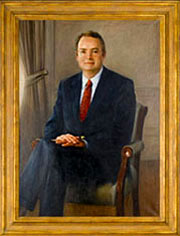
William D. Ruckelshaus.
William D. Ruckelshaus
Served Dec. 4, 1970 – April 30, 1973,
under Richard Nixon
By 1970, many Americans had been convinced of the need for federal environmental protection, thanks to a fire on the polluted Cuyahoga River, a big oil spill along the Santa Barbara coastline, and Rachel Carson’s 1962 book Silent Spring. President Richard Nixon tapped William Ruckelshaus, an assistant attorney general and air-quality advocate from Indiana, to construct the first EPA by piecing together programs from the Interior Department and the Department of Health, Education and Welfare.
The EPA’s first administrator remains one of the most popular with environmentalists, both for navigating the Nixon White House and for setting a high professional standard. Ruckelshaus recruited an idealistic and qualified staff and established the precedent for soliciting public and industry input on regulations. He oversaw the implementation of the landmark Clean Air Act extension of 1970 and the Federal Water Pollution Control Act Amendments of 1972.
Ruckelshaus left the EPA to become acting director of the FBI and then second-in-command at the Justice Department, where he resigned in protest when Nixon ordered him to fire the Watergate special prosecutor (the infamous “Saturday Night Massacre” of Oct. 20, 1973). He would be back at the EPA a decade later under another Republican president.
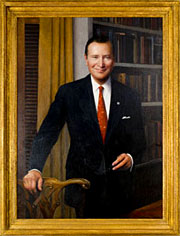
Russell E. Train.
Russell E. Train
Served Sept. 12, 1973 – Jan. 20, 1977,
under Richard Nixon and Gerald Ford
Russ Train moved to the top of the EPA after three years as the first chair of the White House Council on Environmental Quality. Like Ruckelshaus, he benefited from a public and Congress that largely supported environmental legislation and two presidents who may not have realized the depth of their commitment to environmental protection.
Train was considered as successful as Ruckelshaus in building up the young organization and implementing significant new legislation, including the Toxic Substances Control Act and the National Pollutant Discharge Elimination System.
Bill Drayton, a management consultant and founder of the social entrepreneurship organization Ashoka, said Train’s success came from his shrewd management structure. “It was really a very brilliant architecture,” said Drayton, who served as assistant administrator in the Carter EPA. “It took a very difficult problem and said, ‘OK, we’re going let people take bite-sized pieces and do something about it. But we’re still going to think together and have a coherent policy and coherent priorities.’ It was a management structure well ahead of its time.”
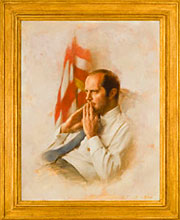
Douglas Costle.
Douglas Costle
Served March 6, 1977 – Jan. 20, 1981,
under Jimmy Carter
Jimmy Carter, the first Democratic president since the formation of the EPA, took more initiative on environmental issues than his two predecessors, and his EPA administrator played a key role in backing him up.
A veteran of the Johnson administration, Douglas Costle helped Carter push through the 1977 Clean Water Act, the 1977 Clean Air Act amendments, and the Surface Mining Control and Reclamation Act, which regulated coal mining. Costle also worked with the Interior Department to prevent new coal plants (planned during the Ford administration) from being built near national parks.
Dealing with the environmental health disaster at Love Canal, the Niagara Falls neighborhood built atop 22,000 tons of toxic chemical waste, consumed much of Costle’s attention in the second half of Carter’s term. The president declared the situation a federal emergency and relocated residents. Costle’s EPA sued Hooker Chemical Co., which polluted the site in the in 1940s and ’50s. It also urged Congress to create the Superfund program for cleaning up hazardous waste sites.

Anne Gorsuch.
Anne Gorsuch (later Anne Gorsuch Burford)
Served May 20, 1981 – March 9, 1983,
under Ronald Reagan
What sort of EPA administrator would suit a president who declared that “trees cause more pollution than automobiles do”? One who did not want the EPA to exist.
Under Ronald Reagan’s watch, Anne Gorsuch tried to dismantle the agency she was charged with leading. She immediately cut its budget by 22 percent and sought more cuts. Enforcement cases from regional EPA offices fell by 79 percent during her first year, a House Energy and Commerce Committee investigator told Grist in 2004.
Since Gorsuch couldn’t get rid of the Clean Air and Clean Water acts, she tried to gut them with proposals to weaken pollution standards, though Congress prevented much of this. Gorsuch’s tenure ended in less than two years after she was found in contempt of Congress for refusing to turn over Superfund records. But her open scorn for scientific counsel had a lasting impact on her party, particularly in the House, said Joe Browder, a Friends of the Earth founder and Everglades restoration advocate. Her most lasting legacy was “making anti-environmentalism one of the 10 commandments of being a Republican,” Browder said.

William Ruckelshaus.
William Ruckelshaus
Served a second term, May 18, 1983 – Jan. 4, 1985, under Ronald Reagan
The EPA’s first administrator returned to the agency from a V.P. post at Northwest logging giant Weyerhaeuser. President Reagan convinced Ruckelshaus he wanted a true environmental defender in the position, Ruckelshaus said. The president may have realized he overreached with Gorsuch.
Ruckelshaus made a sincere effort to restore enforcement work at the agency, appointing new assistants and seeking to restore funding to pre-Reagan levels. He phased out the use of pesticide ethylene dibromide, which was found to be a carcinogen. Even with Ruckelshaus, the Reagan administration could not be characterized as environmentally friendly, but Ruckelshaus’ second stint at the EPA was a clear step forward for the agency, said University of Florida Professor of Political Science Walter Rosenbaum. “Ruckelshaus came back really to restore a measure of respectability and credibility to Congress,” said Rosenbaum. “He was wonderfully received by the agency and did a lot to restore morale.”

Lee Thomas.
Lee Thomas
Served Feb. 8, 1985 – Jan. 20, 1989,
under Ronald Reagan
After spending two years directing the EPA’s Superfund and hazardous-waste programs as an assistant administrator, Lee Thomas became the first insider to lead the agency. He continued the rebuilding necessary after Anne Gorsuch’s leadership, although he remained limited in this work by Reagan’s Office of Management and Budget (presidents use the OMB to set both budgetary and regulatory policy throughout the government). Thomas banned uses of asbestos and implemented amendments to the Superfund program and the Safe Drinking Water Act. He also commissioned a study of EPA priorities that found the agency devoted too many resources to low-risk hazards while neglecting other more serious hazards, such as indoor air pollution and drinking-water contamination.
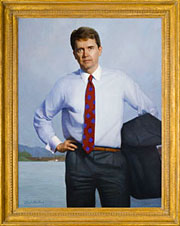
William Reilly.
William Reilly
Served Feb. 6, 1989 – Jan. 20, 1993,
under George H.W. Bush
Bill Reilly joined the EPA after leading the World Wildlife Fund, becoming the first administrator to come directly from a job in the environmental community. A month into his tenure, the Exxon Valdez oil spill thrust the EPA into the international spotlight, and Reilly helped organize an emergency response. He also helped the Bush White House pass the Clean Air Act amendments of 1990, which included a sulfur dioxide cap-and-trade system to address acid rain.
“He was an avowed environmentalist in an administration which was not particularly sympathetic to the environment,” said Rosenbaum of the University of Florida, “although George Bush was much more willing to live with environmental laws than [Reagan] was. Reilly was probably the only really strong voice for environmental protection near the White House. He was very much the odd man out.”
Reilly’s most public disagreement with the White House involved the 1992 U.N. Earth Summit in Rio de Janeiro. Reilly tried to mediate between Bush and representatives from 171 other countries working to address climate change, threats to biodiversity, and water scarcity. He asked summit leaders to adjust the treaty in hopes of persuading Bush to sign it. Leaders in Rio complied, but Bush withheld his support, which Reilly considered the low point of his time at the EPA.
(The Rio conference, incidentally, marked Al Gore’s emergence as a leading voice on climate change. Gore attended the conference just as his book Earth in the Balance was published. A month after returning from Rio, Gore joined Bill Clinton’s presidential ticket.)
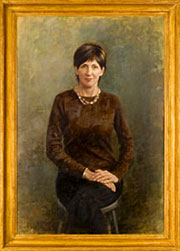
Carol Browner.
Carol Browner
Served Jan. 22, 1993 – Jan. 19, 2001,
under Bill Clinton
Carol Browner worked as Al Gore’s Senate legislative director and head of Florida’s Department of Environmental Protection before becoming the longest-serving administrator of the EPA. She developed a cleanup program for brownfields (abandoned, contaminated urban property) and helped push through amendments to the Safe Drinking Water Act to require water suppliers to distribute annual quality reports to citiziens, among other safeguards.
Browner initiated Project XL, which gave businesses some flexibility in complying with EPA requirements. She also fought off House Republican attempts to weaken the Clean Water Act and was instrumental in promoting the Kyoto climate treaty, which George W. Bush later rejected.
The Clinton administration was never able to make as much environmental progress as greens hoped, in part because Republicans gained control of Congress in the 1994 elections and pursued an anti-regulatory agenda. Environmentalists such as Rosenbaum say Browner was able to strike a fair balance between accommodating industry and enforcing rigorous standards.
Browner was recently tapped by President-elect Barack Obama to head up environment and energy policymaking in the White House — a sort of climate/energy czar. The move was not surprising, given her role as head of the Obama transition team’s environment and energy work group.
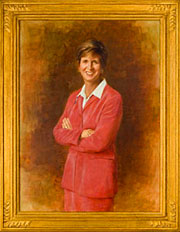
Christine Todd Whitman.
Christine Todd Whitman
Served Jan. 31, 2001 – June 27, 2003,
under George W. Bush
Christine Todd Whitman left her post as New Jersey governor to work for a president who had promised to cap carbon emissions during his campaign. Bush quickly abandoned that position and revealed his true environmental colors in a manner that may have caught Whitman by surprise.
“I think she came there convinced that she was going to be a kind of conciliator between the Bush administration and the Republican majority of Congress and the environmental community,” Rosenbaum said. “She got a very rude awakening to the fact that she was the odd person out, and she was gone very soon.”
Whitman commissioned a comprehensive scientific report on the state of the environment, but the White House censored it, removing evidence about rising global temperatures and human-created causes. Bush sent her to G8 climate change negotiations in Trieste, Italy, without telling her he had removed his support from the meeting. After the 9/11 attacks, Whitman assured New Yorkers that the air in Lower Manhattan was safe to breathe. A 2003 report [PDF] by the EPA inspector general found the agency “did not have sufficient data and analyses to make such a blanket statement.” Residents sued Whitman in a class-action lawsuit that involved the question of whether the White House pressured her into encouraging workers to return to the area. In April 2008, a federal appeals court dismissed the case.
Whitman resigned in mid-2003, and she later said that interference from Vice President Dick Cheney’s office on clean-air regulations prompted her decision. In 2005, Whitman penned It’s My Party Too: The Battle for the Heart of the GOP and the Future of America, which argued that the Republican party’s failure to moderate its positions on environmental and social issues would ultimately amount to political suicide.
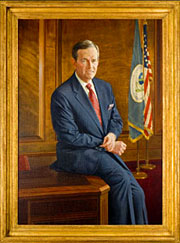
Michael Leavitt.
Michael Leavitt
Served Nov. 6, 2003 – Jan. 26, 2005,
under George W. Bush
After a testy relationship with Whitman, Bush reached for a loyalist in Utah Gov. Michael Leavitt. When the pick was announced, news organizations noted that Leavitt, like Bush, favored shifting pollution control from the feds to the states, and supported the notion of voluntary environmental protections rather than mandatory ones.
Leavitt wasn’t a zealous EPA saboteur along the lines of Anne Gorsuch, but neither did he challenge the White House standard of deferring to industry wishes. He backed Bush’s mercury emissions plan, which was derided for being too lax and driven by the coal lobby. Before the 2004 election, Leavitt was accused of electioneering in swing states. After just 13 months at the EPA, Leavitt moved to the head of the Health and Human Services Department at the start of Bush’s second term.

Stephen Johnson.
Stephen Johnson
Served April 29, 2005 – present,
under George W. Bush
Like Christine Todd Whitman, career scientist and 24-year EPA veteran Stephen Johnson received cautious praise from environmentalists when he was first announced. He wasted little time in losing their support.
In late 2007, Johnson denied California’s request for a waiver to implement its rigorous tailpipe emissions law, limiting the state (and 16 others that had followed suit) in taking action against global warming. In doing so, Johnson ignored the scientific advice of his own agency, paved the way for a legal battle the EPA’s lawyers predicted it would lose, and drew calls for a Justice Department investigation from Senate critics. Against the backdrop of seven years of federal inaction on climate change, the waiver issue stood as a low point of the Bush administration’s environmental record.
The rest of Johnson’s record is equally dubious, as has been well documented by The Philadelphia Inquirer. Among many other things, the EPA’s response to Hurricane Katrina has been criticized widely, and there is evidence that Johnson interfered with EPA science on pesticides. Even the EPA had trouble listing successes from Johnson’s tenure: its “Timeline of Accomplishments” ends in 2006.
Meet the Caretakers
The following people ran the EPA on an acting basis, for the weeks or months it took until a new presidential appointee could be put in place.
Robert Fri: April 30, 1973 – Sept. 12, 1973
John Quarles, Jr.: Jan. 20, 1977 – March 6, 1977
Stephen Jellinek: Jan. 20, 1981 – Jan. 25, 1981
Walter Barber, Jr.: Jan. 25, 1981 – May 19, 1981
Lee Verstandig: March 10, 1983 – May 17, 1983
John Moore: Jan. 21, 1989 – Feb. 5, 1989
W. Michael McCabe: Jan. 20, 2001 – Jan. 30, 2001
Linda J. Fisher: June 28, 2003 – July 11, 2003
Marianne Lamont Horinko: July 14, 2003 – Nov. 5, 2003

